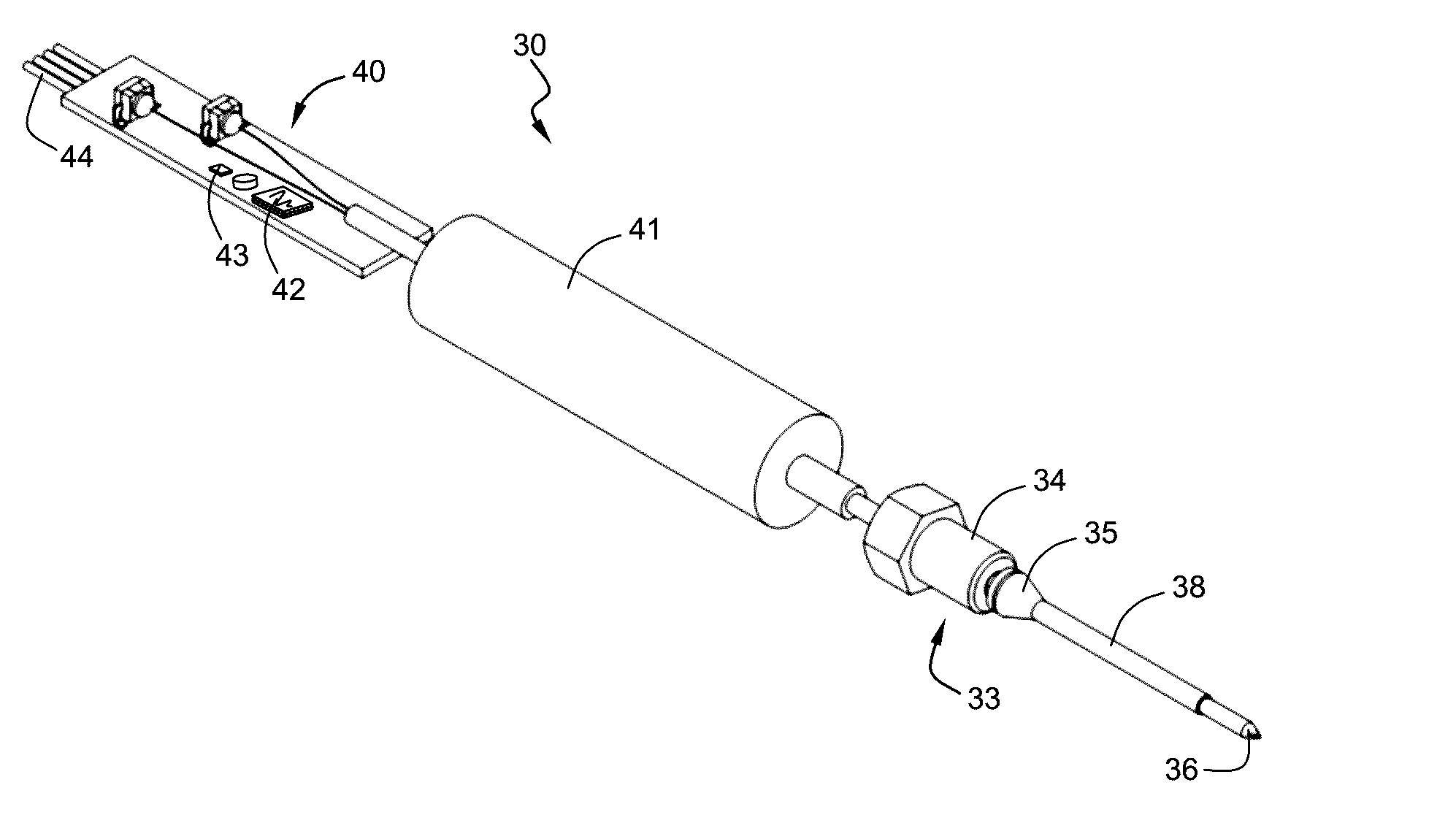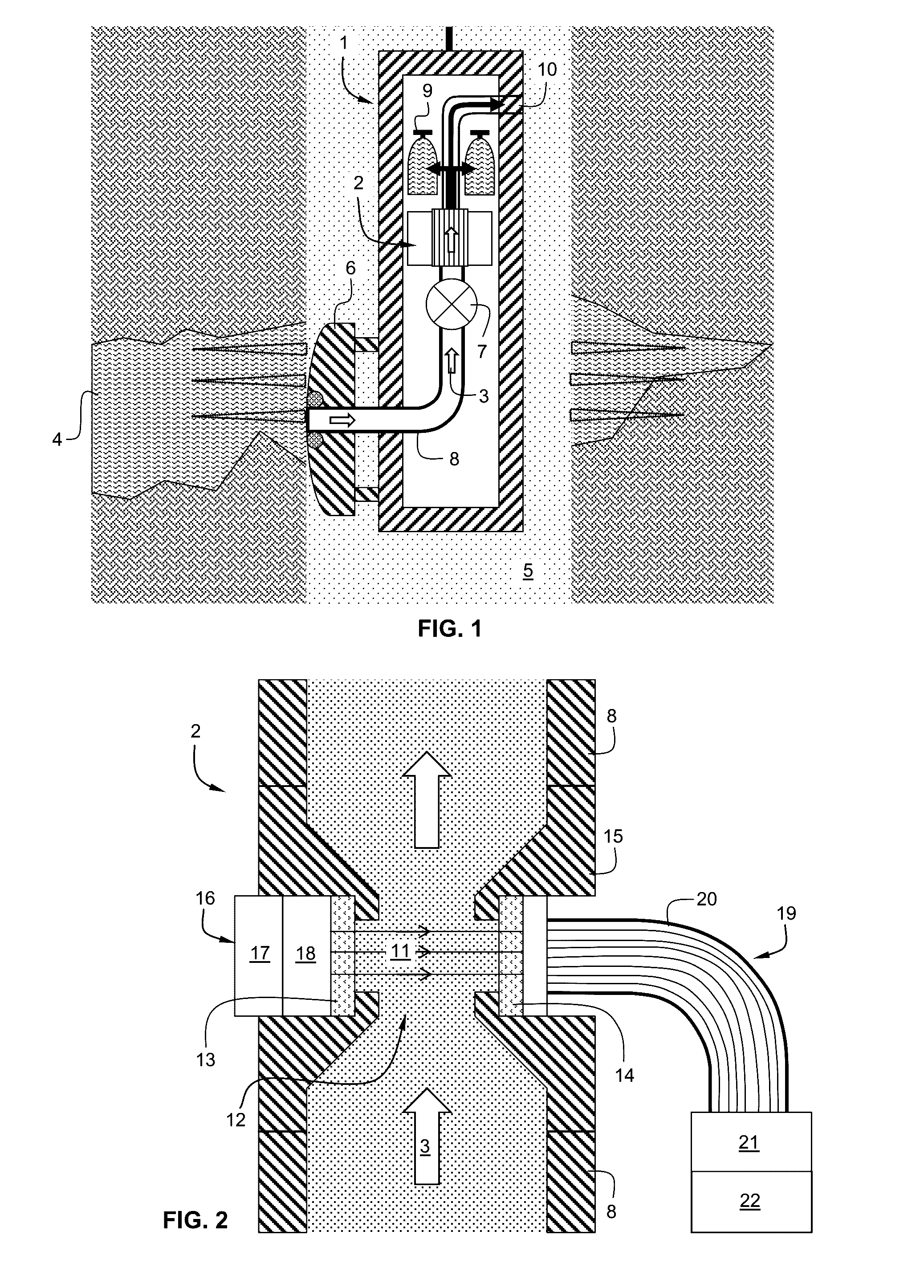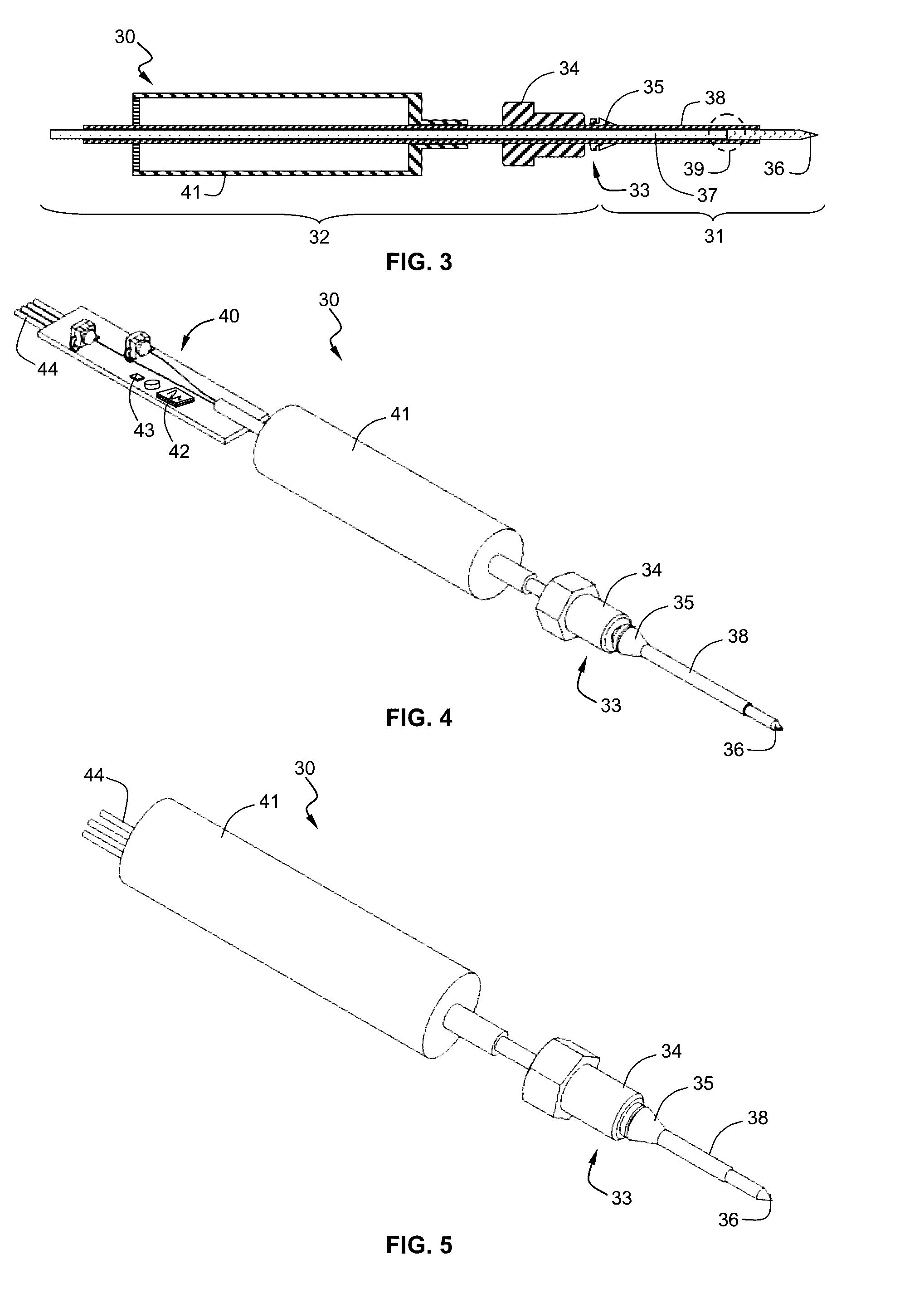Downhole fluid properties analysis device and tools comprising such a device
- Summary
- Abstract
- Description
- Claims
- Application Information
AI Technical Summary
Benefits of technology
Problems solved by technology
Method used
Image
Examples
first embodiment
[0046]FIGS. 6 and 7A are cross section and perspective exploded views showing a downhole fluid analysis tool 50 comprising a downhole fluid analysis cell 51. The downhole fluid analysis cell 51 is connected to the downhole sampling flow line 8 by means of appropriate connectors 59. The downhole fluid analysis cell 51 comprises an analysis pipe portion 52, and first and second threaded holes 53A, 53B. The analysis pipe portion 52 is a cylindrical cavity extending along a longitudinal axis XX′ of the downhole fluid analysis cell 51 and having dimension similar to the downhole sampling flow line 8. The longitudinal axis XX′ substantially corresponds to the fluid flow 3 direction in the downhole sampling flow line 8. The first and second threaded hole 53A, 53B faces each other positioned transversally relatively to the longitudinal axis XX′ of the downhole fluid analysis cell 51. A first optical sonde 30A is inserted into the first threaded hole 53A and tightly connected by means of the...
second embodiment
[0052]The second embodiment enables having the optical probes inserted along the length of the downhole fluid analysis cell 51. This configuration allows a wider optical path length control and is also more adapted to packaging inside a tube shaped tool like a formation tester tool.
[0053]The distance between the tips 36A and 36 B of the optical probes in order to define the optical path length 56 is selected according to attenuation factors to be measured. The attenuation factor may range from several orders of magnitude which require an optical path length from a few tens of microns to a few tens of millimeters depending on fluid composition and light wavelengths. The invention enables a fine definition of the optical path length 56 by sliding the optical probe into the threaded holes 53A, 53B as hereinbefore described.
[0054]FIGS. 9-11 illustrate a particular implementation of the downhole fluid analysis cell 51 that is particularly well adapted for integration in a wireline format...
PUM
 Login to View More
Login to View More Abstract
Description
Claims
Application Information
 Login to View More
Login to View More - R&D
- Intellectual Property
- Life Sciences
- Materials
- Tech Scout
- Unparalleled Data Quality
- Higher Quality Content
- 60% Fewer Hallucinations
Browse by: Latest US Patents, China's latest patents, Technical Efficacy Thesaurus, Application Domain, Technology Topic, Popular Technical Reports.
© 2025 PatSnap. All rights reserved.Legal|Privacy policy|Modern Slavery Act Transparency Statement|Sitemap|About US| Contact US: help@patsnap.com



